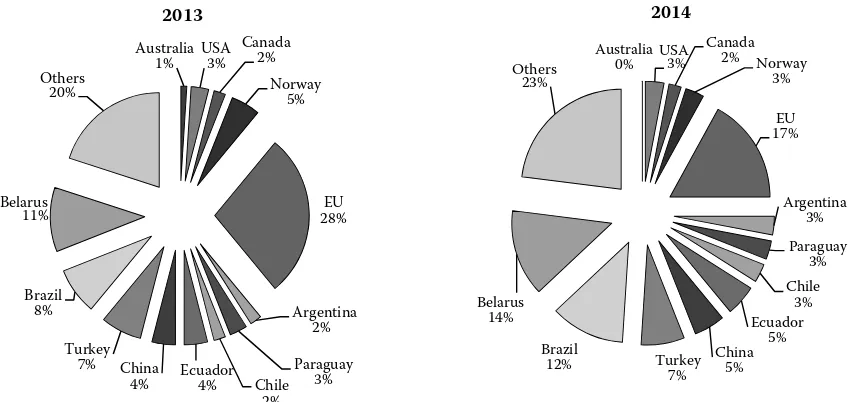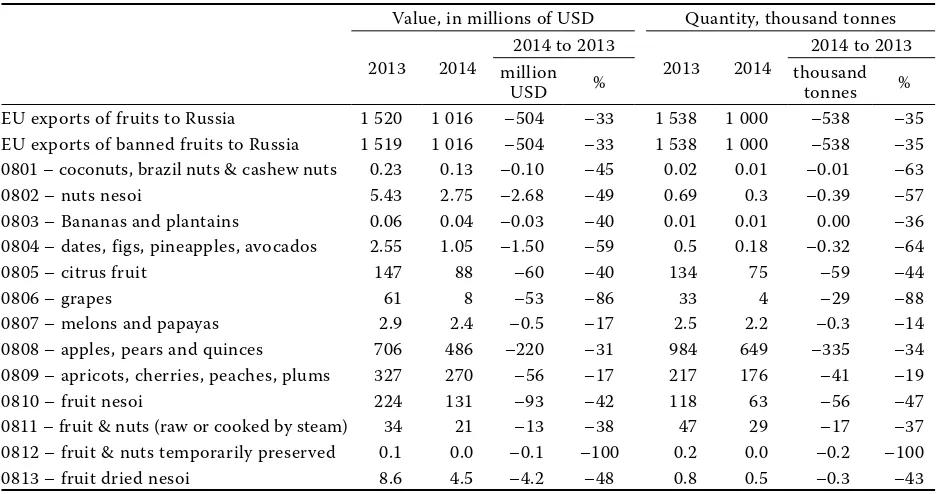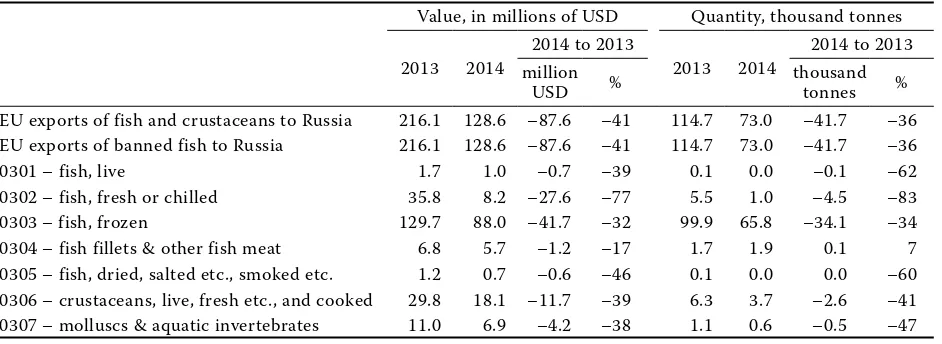Agrarian import ban and its impact on the Russian and European Union agrarian trade performance
Full text
Figure
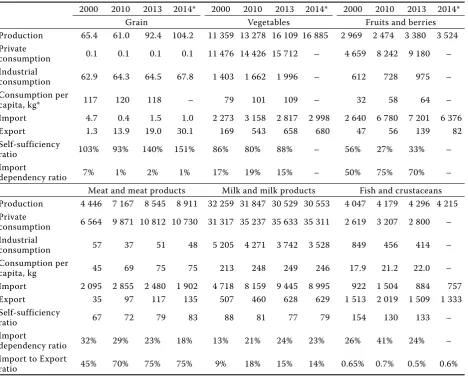
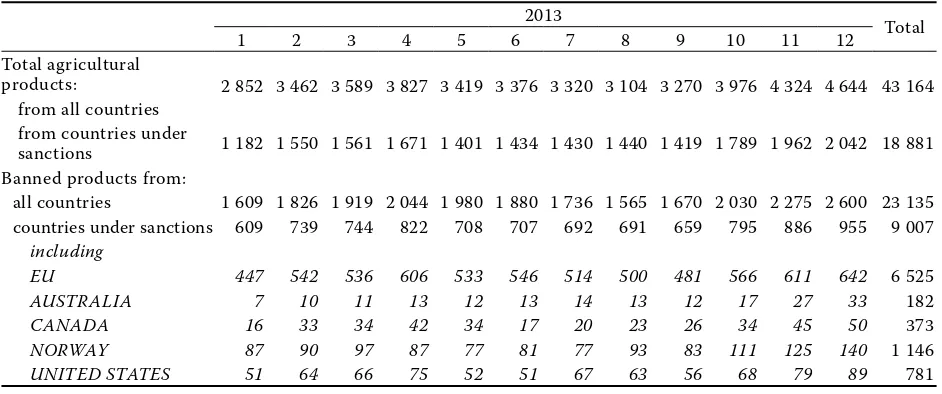
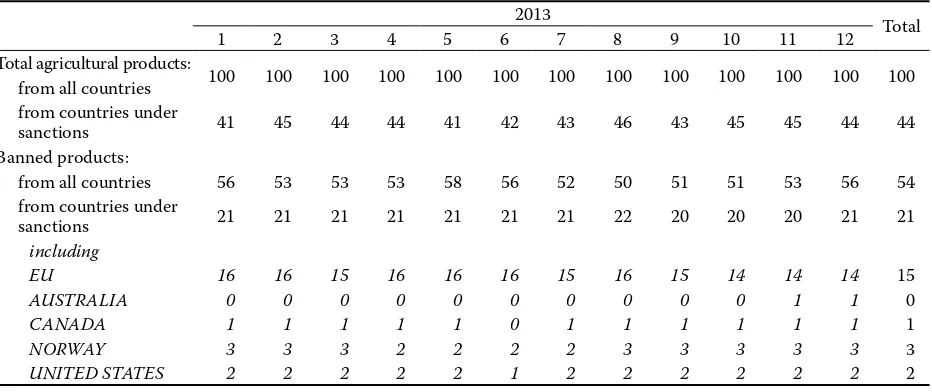
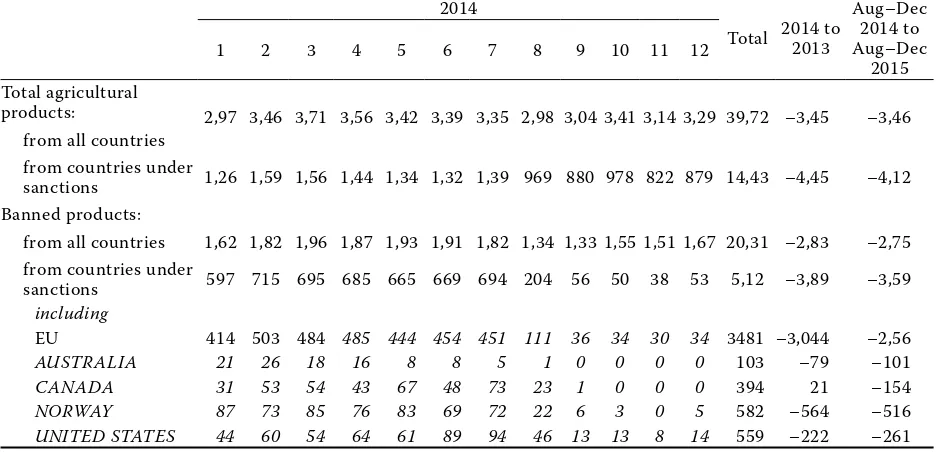
Related documents
Controversially, Eastern European countries experienced a decline of 1.7 per cent on the average in their total factor pro- ductivities. Compared to the first model, all the
Figure 8 shows the evolution of the percentage of the population aged 30-34 years with tertiary degree in the southern countries of European Union on the total population
Petrescu-Mag Ioan Valentin: Bioflux, Cluj-Napoca (Romania) Petrescu Dacinia Crina: UBB Cluj, Cluj-Napoca (Romania) Sima Rodica Maria: USAMV Cluj, Cluj-Napoca (Romania)
Within analyzes of production performances in Serbian agriculture are discussed the dynamics of agricultural production as well as partial productivity in
The CAP was built-up to meet requirements of West European agriculture based on family farming, whereas the Czech large-scale production faced other types of problems..
Because organic agriculture combines tradition, innovation and science to benefit environment, because it offers a good quality of the products and contributes to
The last forty years have witnessed a decrease in the percentage of the active agricultural population from 36% during the 60s to 10.5% in 2007, agricultural income has over tripled,
